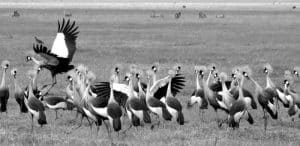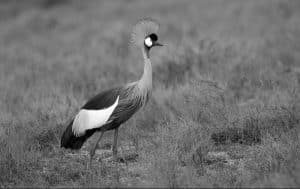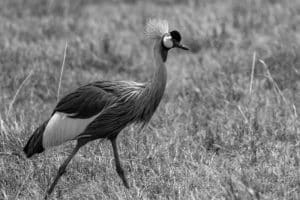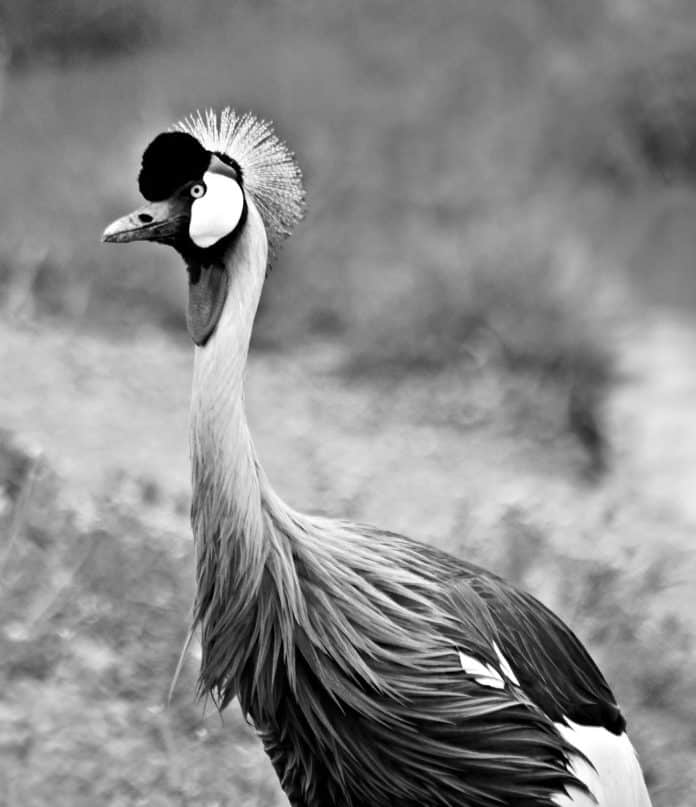Introduction to the Gray Crowned-Crane in Tanzania
The Gray Crowned-Crane, scientifically known as Balearica regulorum, is a magnificent bird species that can be found in Tanzania, East Africa. With its striking appearance and graceful movements, the Gray Crowned-Crane in Tanzania has captured the hearts of many wildlife enthusiasts and photographers. In this article, we will delve into the habitat, physical characteristics, behavior, conservation status, and cultural significance of the Gray Crowned-Crane in Tanzania.
Habitat and Distribution of the Gray Crowned-Crane

The Gray Crowned-Crane is primarily found in the wetlands of Tanzania, including areas such as Serengeti National Park, Ngorongoro Crater, and Lake Manyara. These wetlands provide the perfect environment for the cranes, as they offer an abundance of food and nesting sites. The cranes are known to inhabit both freshwater and saline wetlands, adapting to different ecological conditions.
Physical Characteristics of the Gray Crowned-Crane
The Gray Crowned-Crane is a large bird, standing at an impressive height of up to 3.3 feet (1 meter). It is characterized by its gray feathers, which cover most of its body, and a crown of golden feathers on top of its head. The long legs of the crane are black, while its wings are predominantly white with patches of black. The striking feature of the Gray Crowned-Crane is its long, slender neck, which gives it an elegant appearance as it gracefully moves through the wetlands.
Behavior and Mating Rituals of the Gray Crowned-Crane
The Gray Crowned-Crane is known for its elaborate mating rituals, which are a sight to behold. During courtship displays, the cranes engage in a series of dances, including bowing, jumping, and running with outstretched wings. These displays not only serve as a way to attract a mate but also reinforce the bond between pairs. Once a pair is formed, they engage in mutual preening and build nests together in the wetlands.
Conservation Status and Threats to the Gray Crowned-Crane

Despite its elegance and cultural significance, the Gray Crowned-Crane is facing numerous threats to its survival. The International Union for Conservation of Nature (IUCN) has listed the species as vulnerable, mainly due to habitat loss and degradation. Wetland drainage, agricultural expansion, and human disturbance are some of the factors contributing to the decline in Gray Crowned-Crane populations. It is crucial to raise awareness and implement conservation measures to ensure the long-term survival of this majestic bird.
The Importance of Wetlands for the Gray Crowned-Crane
Wetlands play a vital role in the life of the Gray Crowned-Crane. They provide a rich source of food, including insects, small vertebrates, and plant material. The wetlands also offer nesting sites and protection from predators. Additionally, wetlands act as natural water filters, purifying the water and maintaining the overall health of the ecosystem. By conserving and restoring wetlands, we can protect the habitat of the Gray Crowned-Crane and ensure the survival of not only this species but also other wildlife that rely on these valuable ecosystems.
Wildlife Tourism and the Gray Crowned-Crane in Tanzania
Tanzania is renowned for its diverse wildlife, and the Gray Crowned-Crane is undoubtedly one of the highlights for wildlife enthusiasts visiting the country. Many national parks and reserves in Tanzania offer opportunities to observe and photograph these majestic birds in their natural habitat. Wildlife tourism not only provides an unforgettable experience for visitors but also generates revenue that can support conservation efforts. By engaging in responsible tourism practices, we can contribute to the conservation of the Gray Crowned-Crane and its habitat.
Tips for Observing and Photographing the Gray Crowned-Crane
If you’re planning to observe or photograph the Gray Crowned-Crane in Tanzania, here are some tips to enhance your experience. First and foremost, it is essential to respect the birds’ space and avoid disturbing their natural behavior. Be patient and observe from a distance, using binoculars or a telephoto lens to get a closer look. When photographing, consider the lighting conditions and capture the cranes in their natural environment. Remember to prioritize the welfare of the birds and follow any guidelines provided by local guides or authorities.
Cultural Significance of the Gray Crowned-Crane in Tanzania

The Gray Crowned-Crane holds significant cultural value in Tanzania. It is considered a symbol of peace, elegance, and prosperity. In some local communities, the crane is associated with good fortune and is revered as a sacred bird. Its presence in traditional dances and ceremonies showcases the deep-rooted cultural connection between the people of Tanzania and the Gray Crowned-Crane. By understanding and appreciating this cultural significance, we can foster a sense of respect and conservation for this magnificent bird.
Conclusion: Celebrating the Beauty and Diversity of the Gray Crowned-Crane in Tanzania
In conclusion, the Gray Crowned-Crane in Tanzania is a true symbol of elegance amidst wetland abundance. Its striking appearance, elaborate mating rituals, and cultural significance make it a treasured species. However, the cranes face threats to their survival, highlighting the importance of conserving their habitat and raising awareness about their plight. By celebrating the beauty and diversity of the Gray Crowned-Crane, we can inspire others to join in the efforts to protect this majestic bird and the wetlands it calls home.


































